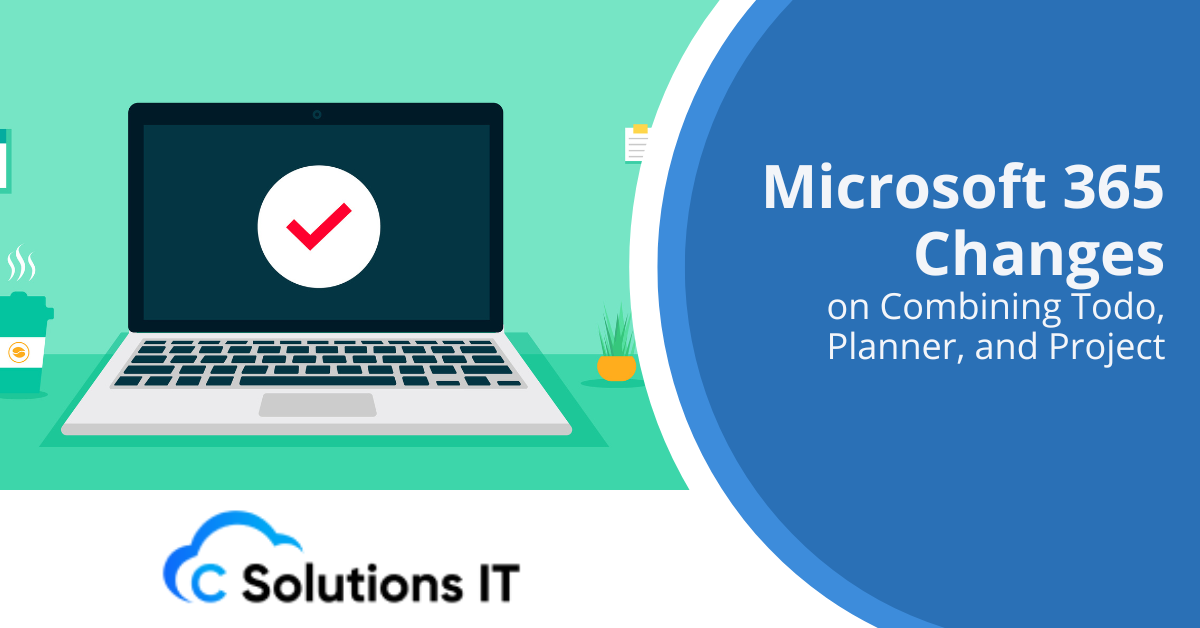Microsoft 365 Changes on Combining Todo, Planner, and Project

In a groundbreaking move announced at Ignite 2023, Microsoft is set to redefine how users navigate tasks and projects within the Microsoft 365 ecosystem. This transformative shift involves merging the functionalities of To Do, Planner, and elements of Project into a consolidated platform aptly named Microsoft Planner.
The objective is clear – simplify work management and provide a more intuitive, streamlined experience for individuals, teams, and project managers.
The Evolution of Microsoft 365
Gone are the days of juggling between different applications for individual tasks, team projects, and intricate project management. With the advent of Microsoft Planner, users can anticipate a comprehensive suite of features that will reshape their work management experience.
What Does This Change Mean?
Gone are the days of juggling separate apps for individual tasks, team projects, and complex project management. The new Planner will encompass a broad spectrum of features, offering:
Individual Task Management: A Personal Touch
The new Planner will cater to the individual user’s needs, offering a robust personal task management system reminiscent of the existing To-Do app. Users can efficiently capture and manage personal to-dos, seamlessly integrating AI-powered suggestions and reminders to enhance task management. This section brings a personal touch to the work management experience, ensuring individuals can effortlessly stay on top of their projects.
Collaborative Team Projects: Powering Teamwork
For teams, the new Planner maintains the collaborative spirit of the existing Planner app. Users can seamlessly manage team projects and tasks, leveraging features such as boards, buckets, and assignments for effective collaborative planning. Integration with other Microsoft 365 tools like Teams and Loop further enhances the collaborative potential, promising a more cohesive teamwork experience.
Enterprise-grade Project Management: Scaling Up Complexity
Microsoft Planner doesn’t stop at individual tasks and team projects; it steps into enterprise-grade project management. Project managers can navigate complex projects with features like dependencies, Gantt charts, and critical paths.
The functionalities borrowed from Microsoft Project for the web elevate the platform, providing insights and tracking progress against goals for large-scale projects.
A Unified and Streamlined Experience: Access Anywhere, Anytime
What sets Microsoft Planner apart is its promise of a unified and streamlined experience. Users can access all tasks, plans, and projects from one central location, enjoying a consistent user interface across devices and platforms. Including AI-powered assistance for intelligent suggestions and task prioritization adds a layer of sophistication, making work management efficient and smart.
The Roadmap: When Can Users Expect the Change?
The transition to Microsoft Planner will occur in phases, showcasing Microsoft’s commitment to a seamless user experience:
- Spring 2024: The updated Planner app with combined functionalities will be available within Microsoft Teams.
- Later in 2024: The web version of the new Planner will be released, ensuring accessibility on any web browser.
To keep users in the loop, Microsoft has already initiated previews for the new Planner experience. Individuals can register for notifications, ensuring they stay informed about its accessibility for their organization and facilitating a seamless transition when the time arrives.
The Driving Force: Why Is This Change Happening?
Microsoft’s decision to consolidate To Do, Planner, and elements of Project into a single solution is driven by a strategic vision to address the evolving needs of users. This change aims to:
- Reduce Complexity and Save Time: Users will no longer need to navigate between different apps for various tasks and projects.
- Improve Collaboration and Teamwork: Teams can collaborate seamlessly on projects, regardless of size and complexity.
- Enhance Individual Productivity: AI-powered features and personalized views assist individuals in focusing and managing their time effectively.
- Empower Project Managers: Robust features from Project for the Web will empower project managers to handle complex projects efficiently.
Preparing for the Transition: A Strategic Approach
As the rollout of the new Planner progresses, users and organizations can take strategic steps to ensure a smooth transition:
- Stay Informed: Sign up for updates from Microsoft regarding the new Planner and its availability.
- Explore New Features: Familiarize yourself with the new Planner experience through previews and documentation.
- Prepare Your Team: Communicate the upcoming changes with your team, emphasizing the benefits of the new platform.
- Plan Your Migration: If your organization heavily relies on To Do, Planner, or Project, develop a plan for migrating data and workflows to the new system.
Embracing Efficiency and Collaboration
Microsoft’s decision to merge To Do, Planner, and elements of Project into a unified solution is a monumental leap towards simplifying and streamlining work management within the Microsoft 365 ecosystem. This change promises to benefit individuals, teams, and project managers by providing a comprehensive, intuitive, and AI-powered platform for managing tasks, plans, and projects of all sizes.
As we eagerly await the release of the new Planner, it’s time to embrace a more efficient and collaborative approach to managing work within the Microsoft 365 universe. Contact C Solutions IT today and get ready for a revolutionary shift in your work management paradigm.
